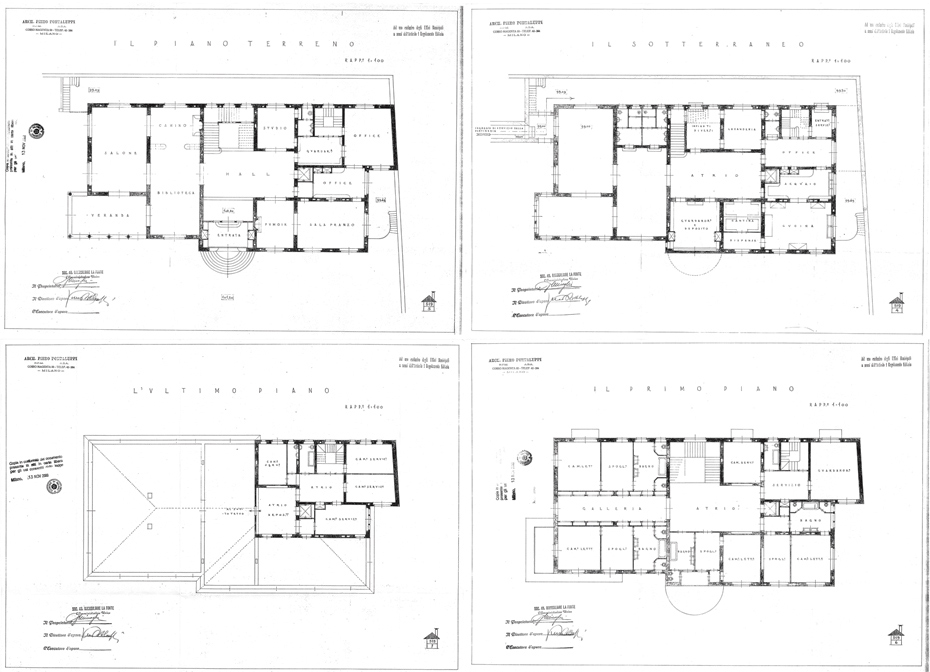One of the stars of I Am Love, Villa Necchi Campiglio was originally built as a stage for the real-life drama of its Milanese industrialist occupants 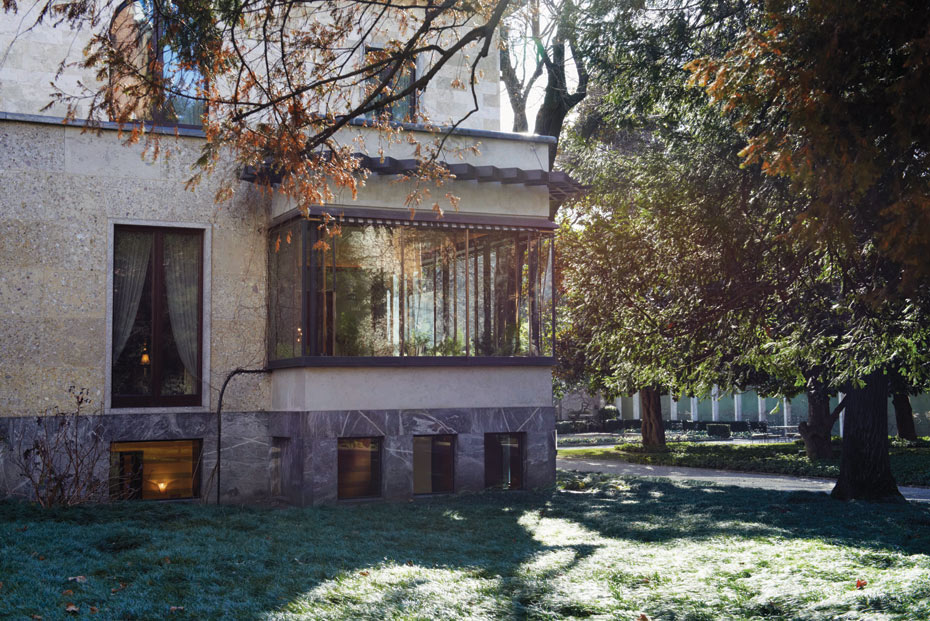
When Villa Necchi Campiglio was built in the mid 1930s, it was to welcome the elite of Milanese society through its gleaming brass front doors. Today, those doors are opened to the public five days a week and the patrician palazzo, tucked away in the centre of the city has been transformed into a cultural resource where interior design, art and ornaments combine in a film-worthy setting that evokes a golden era of Italian glamour. The property’s exquisite style earned it a starring role in Luca Guadagnino’s I Am Love, in which Tilda Swinton plays Emma, a mother of three and wife of a wealthy Milanese industrialist. As relationships within the family begin to fracture, Emma’s desperate attempts at keeping up appearances are played out against the backdrop of the villa’s clean-lined and flawlessly detailed interior spaces. The drama revolves around issues typical of bourgeois Milanese life – family, wealth, status, loyalty – and the property plays its part with understated decorum.  Villa Necchi Campiglio was designed in 1932 for Angelo Campiglio, his wife Gigina Necchi and her sister Nedda, who all belonged to the industrial Lombard upper class and who desired a house that would be both a home and a status symbol. For this important project the family called upon the renowned Milanese architect Piero Portaluppi, whose innovative and extravagant style matched their progressive tastes. The resulting building is a rationalist icon and a key project in Portaluppi’s portfolio. It seems to anticipate the functionalist doctrines of the great Gio Ponti, who 25 years later began his seminal collection of essays In Praise of Architecture with the words: “Love architecture, be it ancient or modern. Love it for its fantastic, adventurous and solemn creations; for its inventions; for the abstract, allusive and figurative forms that enchant our spirit and enrapture our thoughts. Love architecture, the stage and support of our lives.”
Villa Necchi Campiglio was designed in 1932 for Angelo Campiglio, his wife Gigina Necchi and her sister Nedda, who all belonged to the industrial Lombard upper class and who desired a house that would be both a home and a status symbol. For this important project the family called upon the renowned Milanese architect Piero Portaluppi, whose innovative and extravagant style matched their progressive tastes. The resulting building is a rationalist icon and a key project in Portaluppi’s portfolio. It seems to anticipate the functionalist doctrines of the great Gio Ponti, who 25 years later began his seminal collection of essays In Praise of Architecture with the words: “Love architecture, be it ancient or modern. Love it for its fantastic, adventurous and solemn creations; for its inventions; for the abstract, allusive and figurative forms that enchant our spirit and enrapture our thoughts. Love architecture, the stage and support of our lives.”
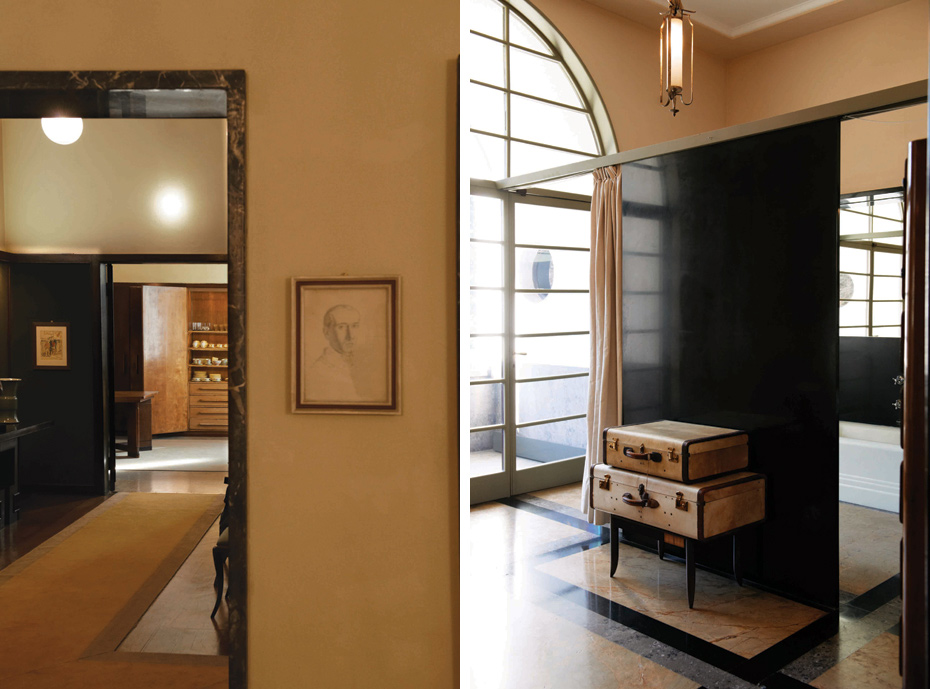
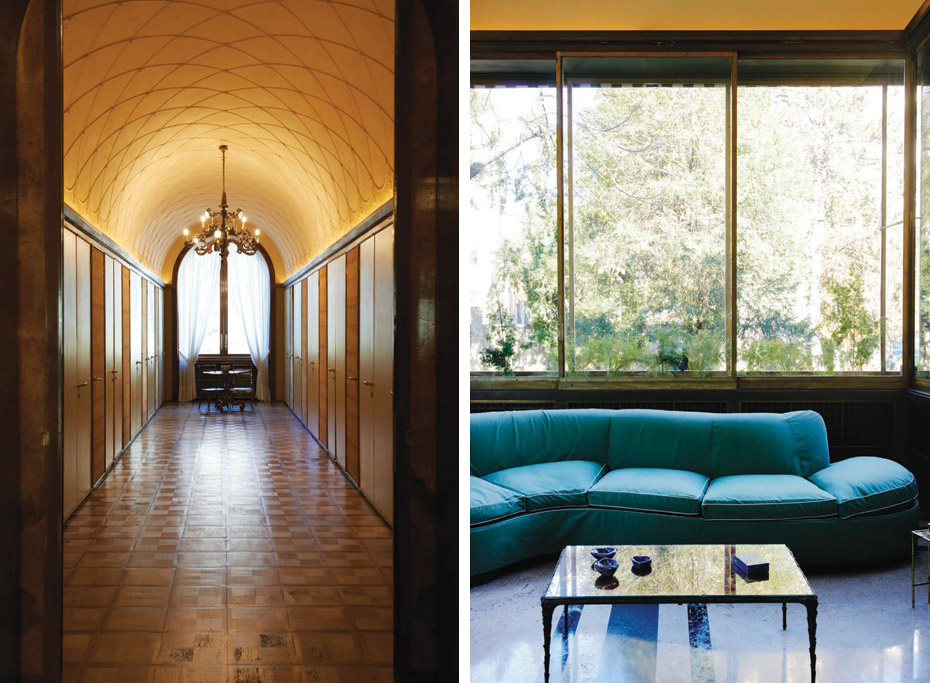
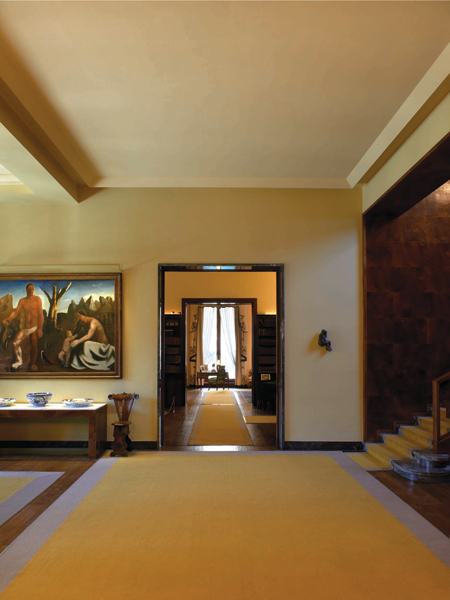 Portaluppi created Villa Necchi Campiglio as a stage upon which the lives of its gregarious residents could play out and to provide a suitable backdrop for the family’s collection of objets d’art. The spaces were designed according to the principles of the modern style that had begun to emerge at the time, with a spare, orthogonal construction that eschewed decoration. The owners, producers of cast iron and enamelled sewing machines who were used to combining style and industry in their family business, were comfortable with the rejection of traditional decoration and set about transforming the villa into an expression of modernity. Villa Necchi Campiglio soon gained a reputation for its vibrant social life, with the Necchi sisters welcoming neighbours, international guests and artists to their urban oasis tucked away in the centre of the city. The building does not overlook the street and entry is via a pathway that leads from the concierge’s gatehouse through expansive grounds to the house, which is nestled among tall trees. The wall separating the villa from its monumental neighbours reflects the tact with which the Necchi Campiglio family preferred to conduct their private affairs.
Portaluppi created Villa Necchi Campiglio as a stage upon which the lives of its gregarious residents could play out and to provide a suitable backdrop for the family’s collection of objets d’art. The spaces were designed according to the principles of the modern style that had begun to emerge at the time, with a spare, orthogonal construction that eschewed decoration. The owners, producers of cast iron and enamelled sewing machines who were used to combining style and industry in their family business, were comfortable with the rejection of traditional decoration and set about transforming the villa into an expression of modernity. Villa Necchi Campiglio soon gained a reputation for its vibrant social life, with the Necchi sisters welcoming neighbours, international guests and artists to their urban oasis tucked away in the centre of the city. The building does not overlook the street and entry is via a pathway that leads from the concierge’s gatehouse through expansive grounds to the house, which is nestled among tall trees. The wall separating the villa from its monumental neighbours reflects the tact with which the Necchi Campiglio family preferred to conduct their private affairs.
 Newspaper articles published around the time of the house’s completion reveal that a tunnel was constructed beneath the garden to connect the gatehouse with the main building, sparking rumours about its use. The tunnel was in fact built as a service passage but subsequently employed to maintain the privacy of important guests,like the first consul of England and later the consul of Holland (who lived in the villa) – as well as representatives of the military regime. During the fascist period, the Necchi Campiglios did not officially align themselves with Italy’s ruler but still maintained working relations, evidenced by Mussolini’s visit to the Necchi foundry.
Newspaper articles published around the time of the house’s completion reveal that a tunnel was constructed beneath the garden to connect the gatehouse with the main building, sparking rumours about its use. The tunnel was in fact built as a service passage but subsequently employed to maintain the privacy of important guests,like the first consul of England and later the consul of Holland (who lived in the villa) – as well as representatives of the military regime. During the fascist period, the Necchi Campiglios did not officially align themselves with Italy’s ruler but still maintained working relations, evidenced by Mussolini’s visit to the Necchi foundry.
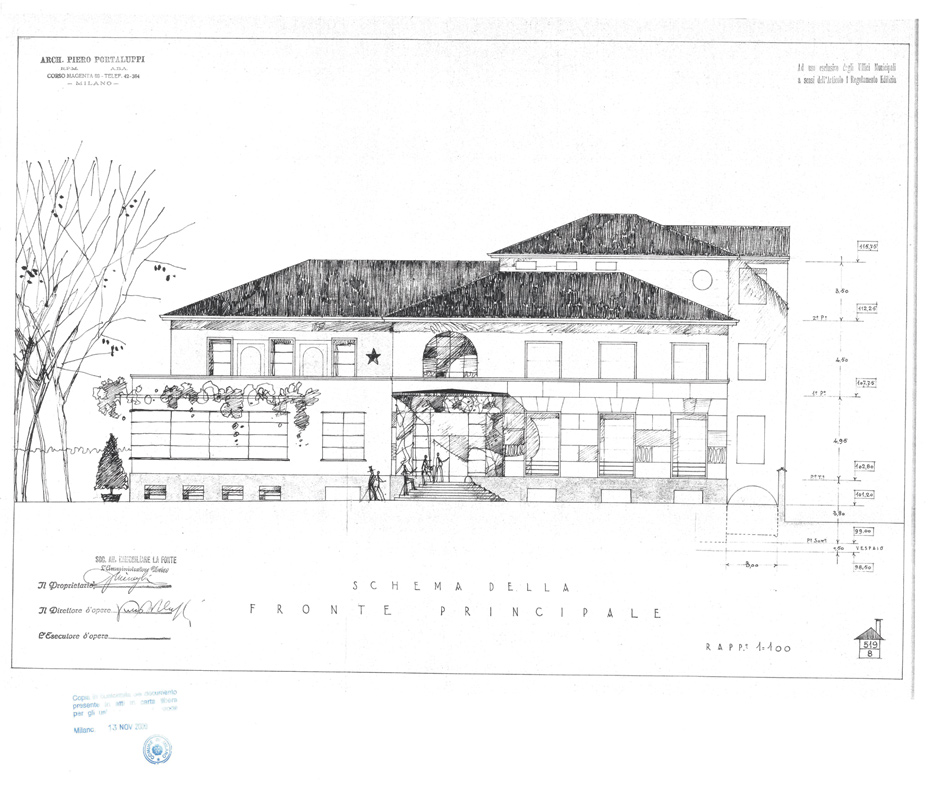
 Following the death of the heirless Gigina Necchi Campiglio in 2001, the villa was bequeathed to Italy’s national trust (Fondo per l’Ambiente Italiano) and underwent significant restoration, finally opening to the public in 2008. Upon entering the soaring lobby today, visitors are plunged into a past that can be charted through the building’s renovations. Most significant is the work of Tomaso Buzzi, who was initially employed to alter some of the garden, the tennis court and the decorative wall of the pool and then invited back after the Second World War to redecorate the interior in fashionable 19th century style. Between 1946 and 1957, Buzzi designed furniture and upholstery for the villa, recommended antiques, added Baroque details and, with the help of expert craftsmen, brought a feeling of richness and comfort to the rooms that had been lacking from Portaluppi’s purposefully sparse scheme.
Following the death of the heirless Gigina Necchi Campiglio in 2001, the villa was bequeathed to Italy’s national trust (Fondo per l’Ambiente Italiano) and underwent significant restoration, finally opening to the public in 2008. Upon entering the soaring lobby today, visitors are plunged into a past that can be charted through the building’s renovations. Most significant is the work of Tomaso Buzzi, who was initially employed to alter some of the garden, the tennis court and the decorative wall of the pool and then invited back after the Second World War to redecorate the interior in fashionable 19th century style. Between 1946 and 1957, Buzzi designed furniture and upholstery for the villa, recommended antiques, added Baroque details and, with the help of expert craftsmen, brought a feeling of richness and comfort to the rooms that had been lacking from Portaluppi’s purposefully sparse scheme.
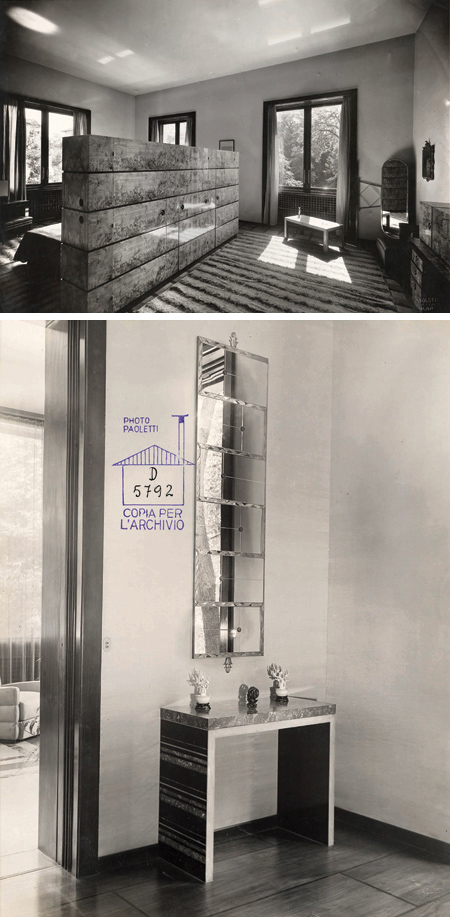
Marco is editor-in-chief of Zero Magazine and design curator at Museo del Novecento in Milan. Continue to see more floor plans from Villa Necchi 
